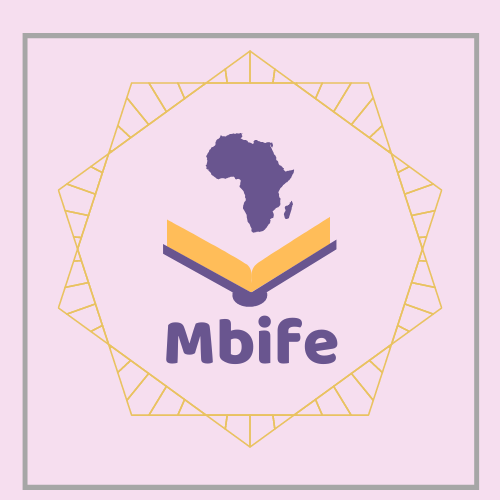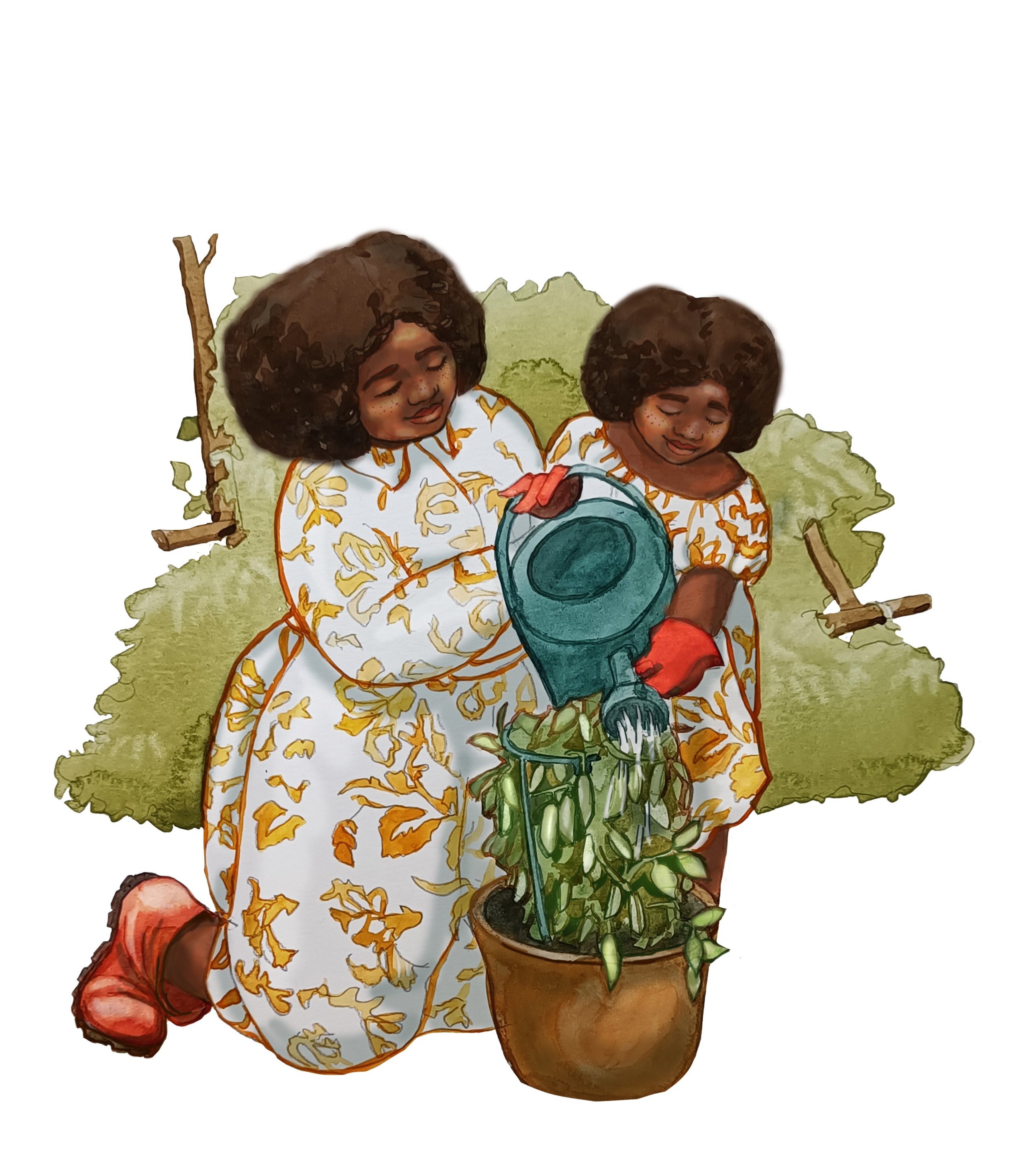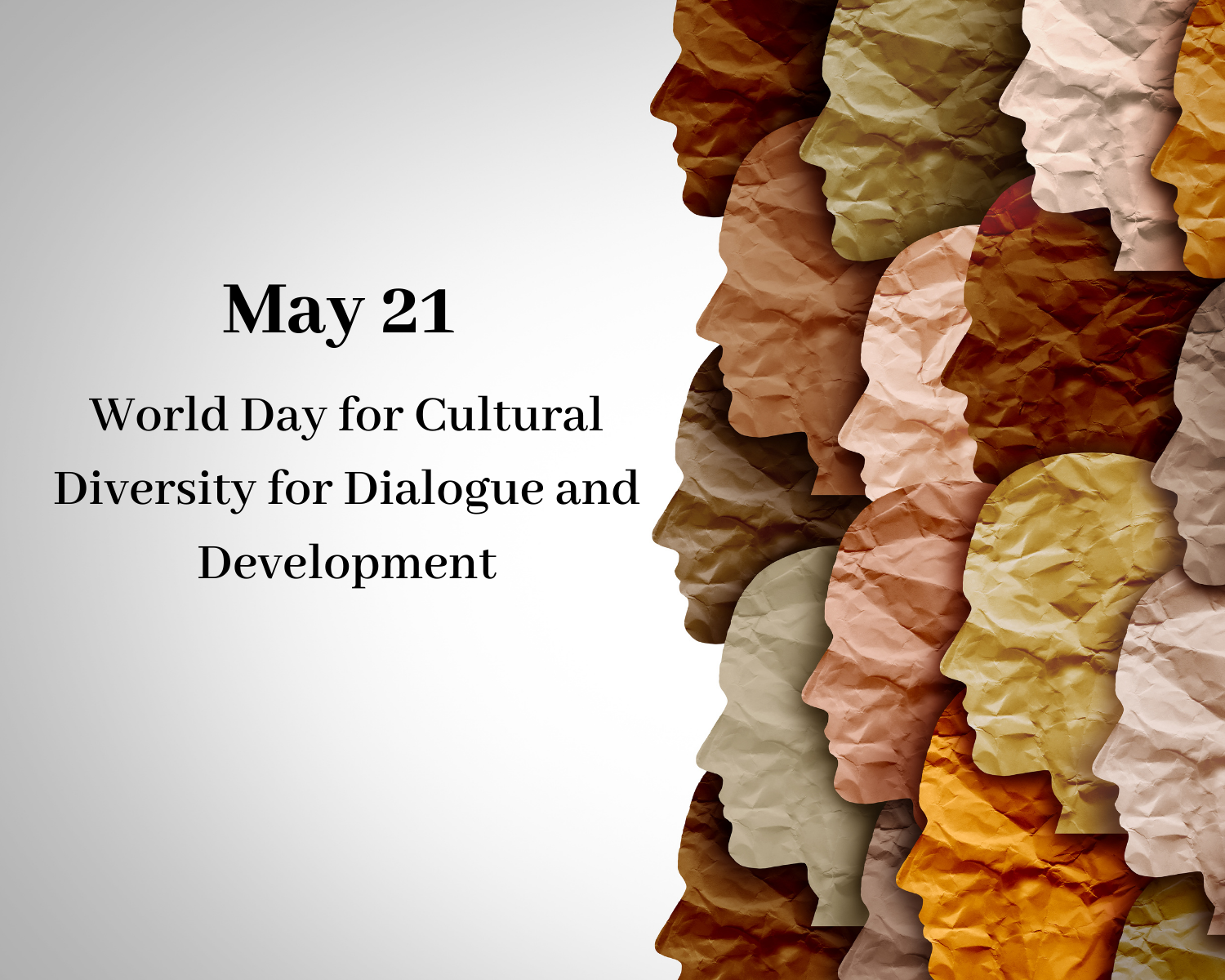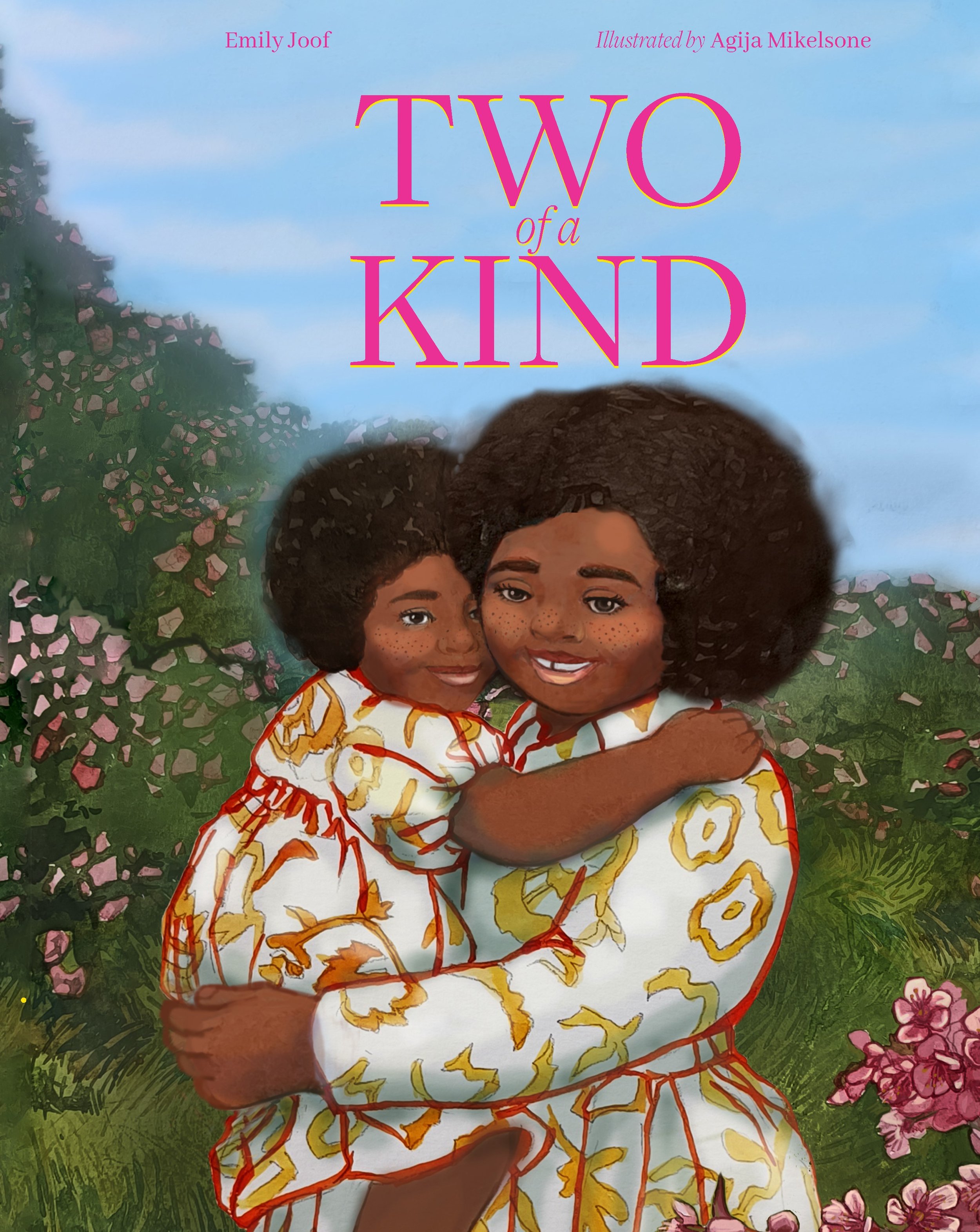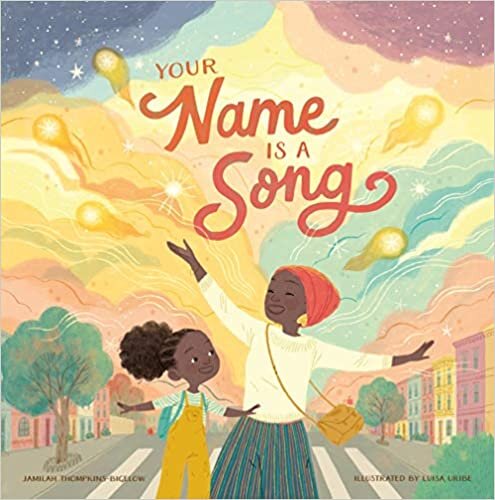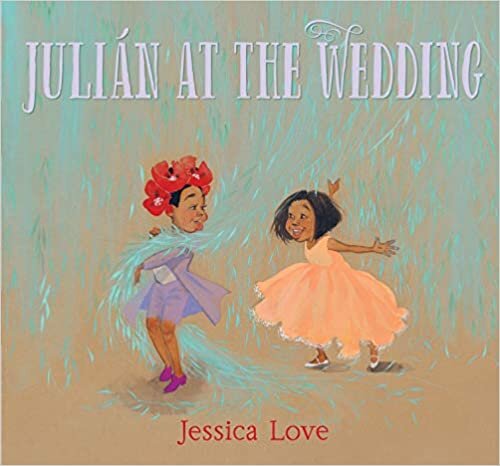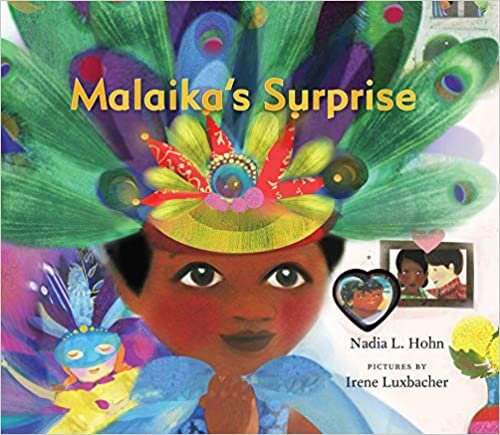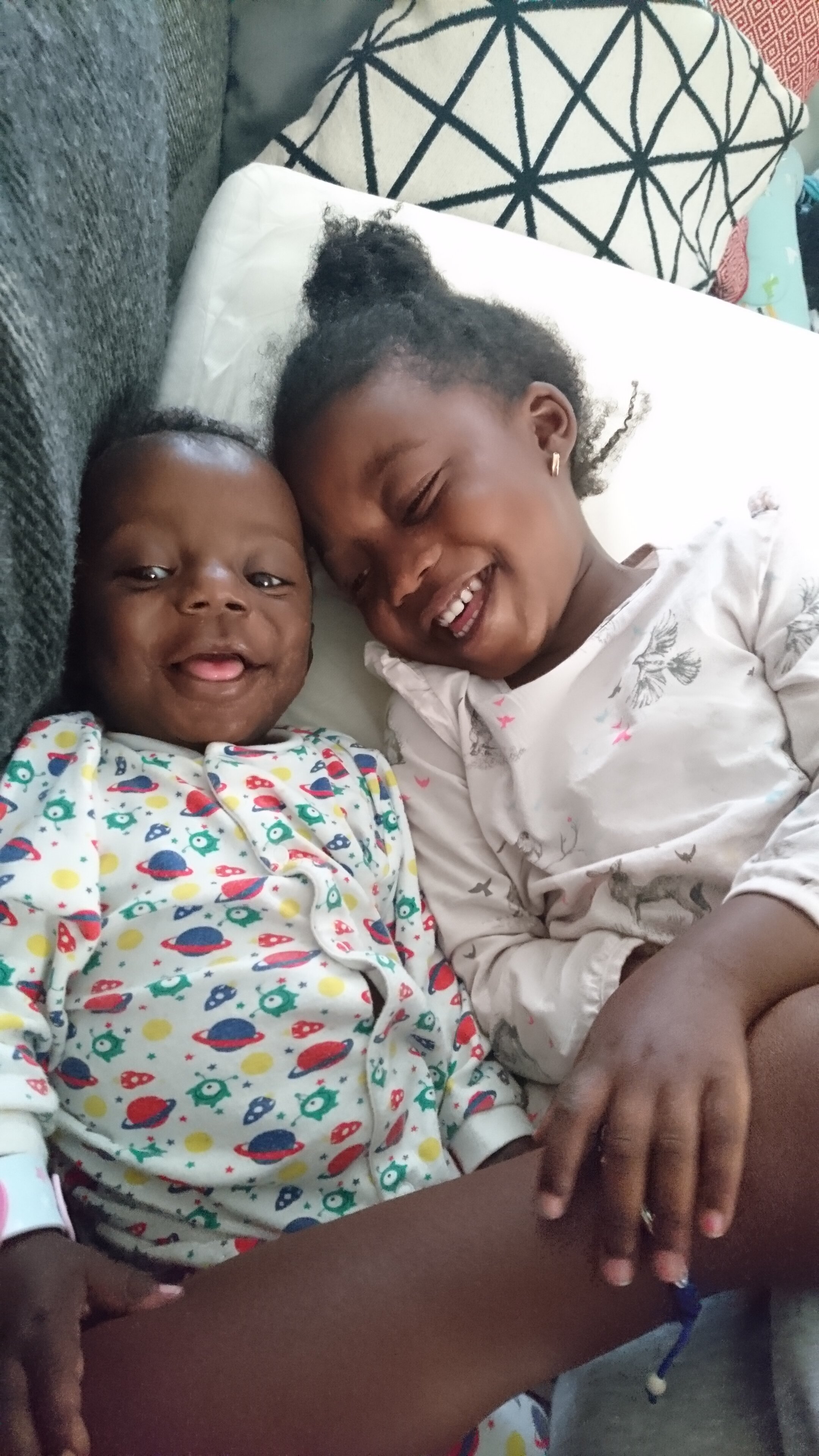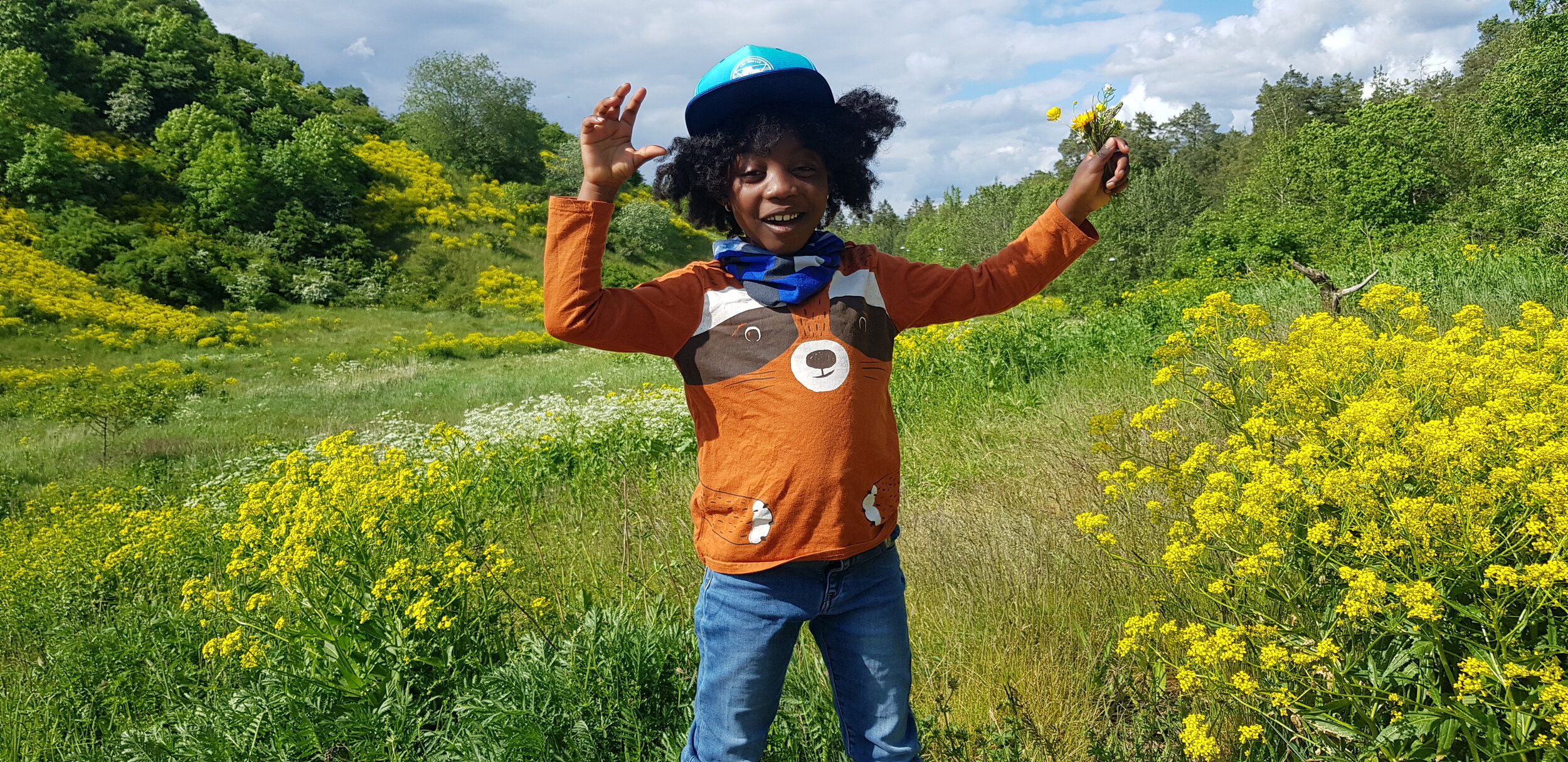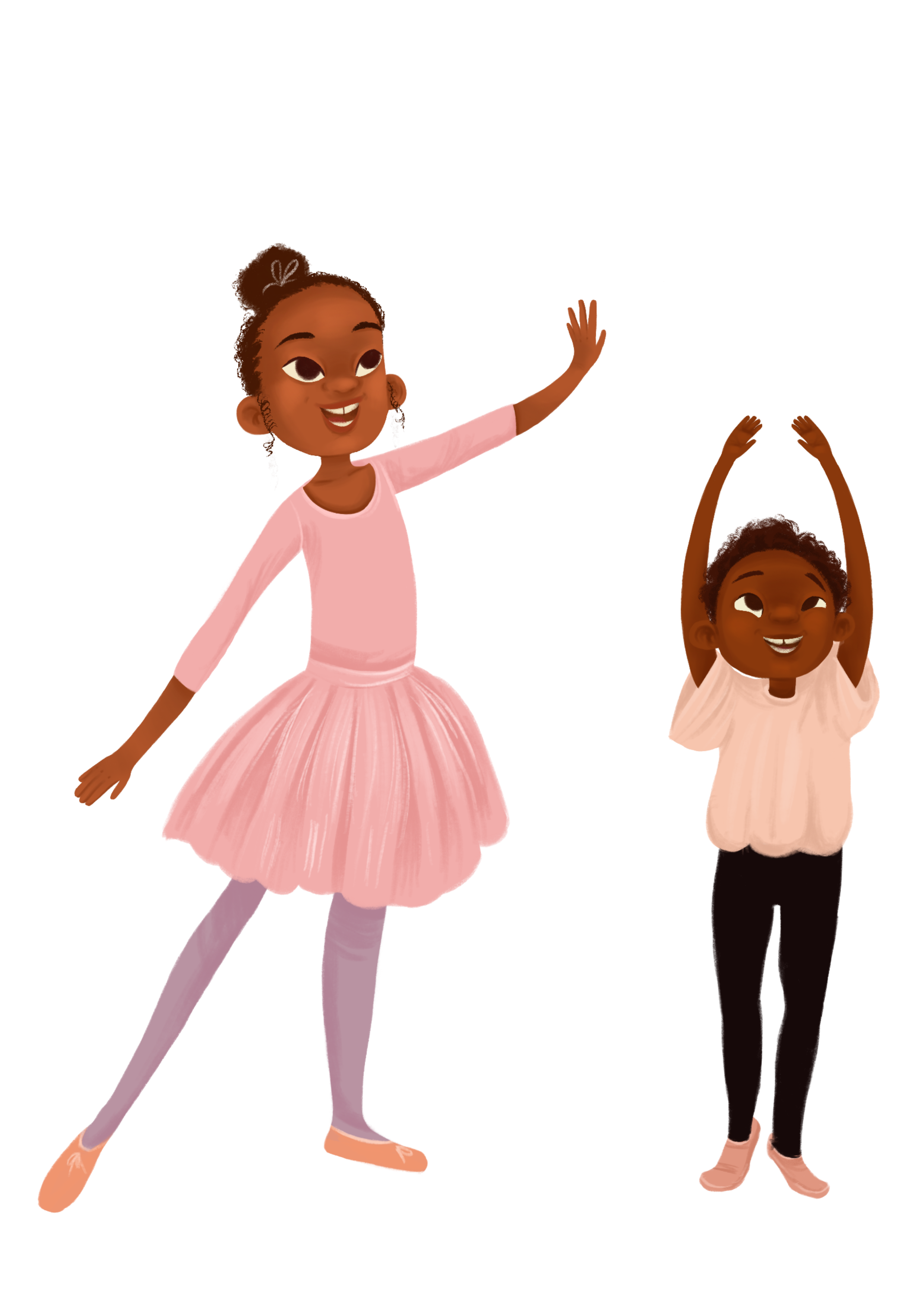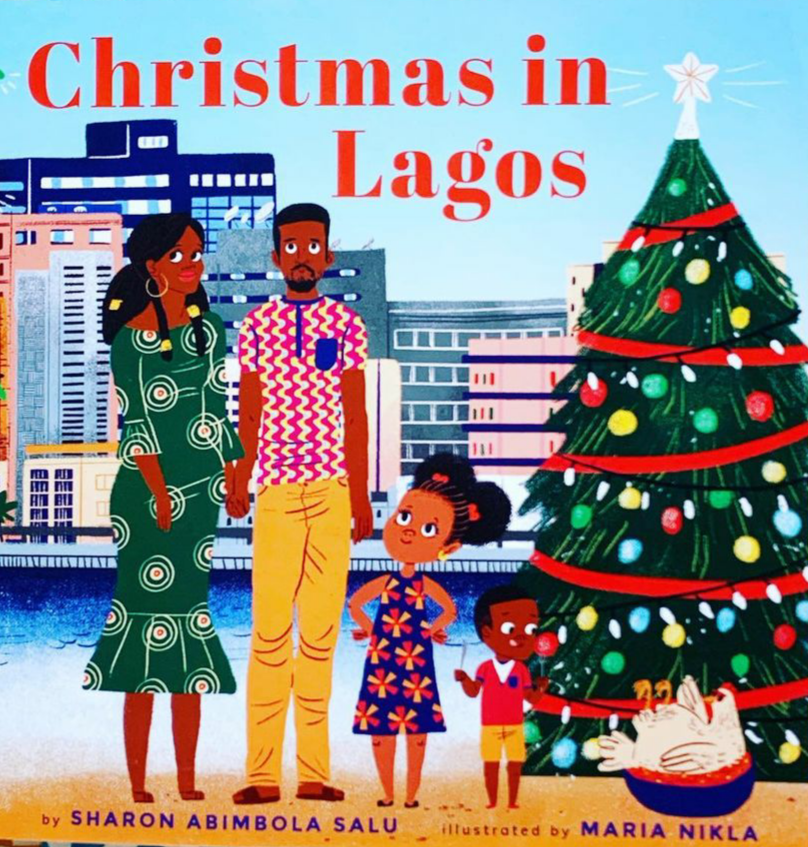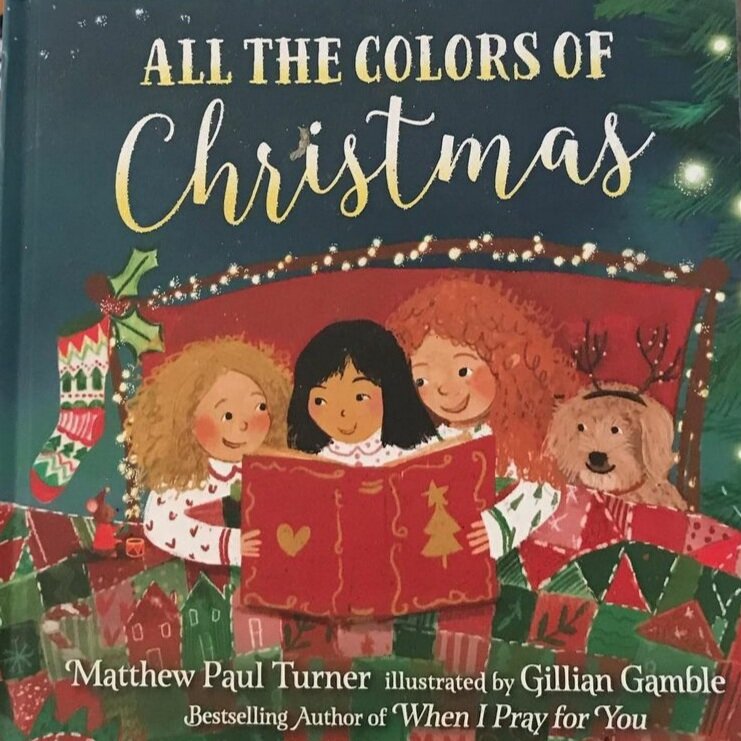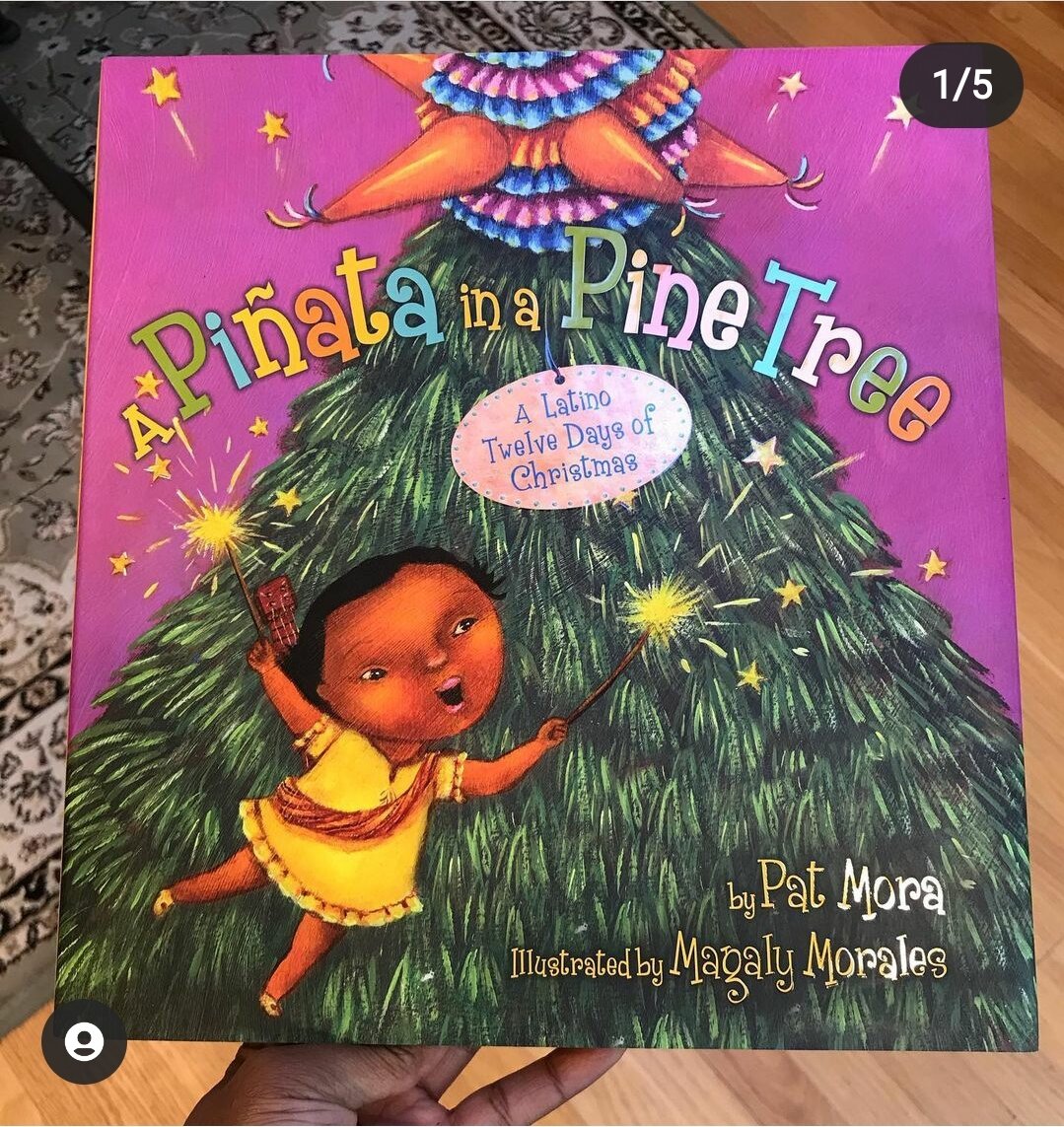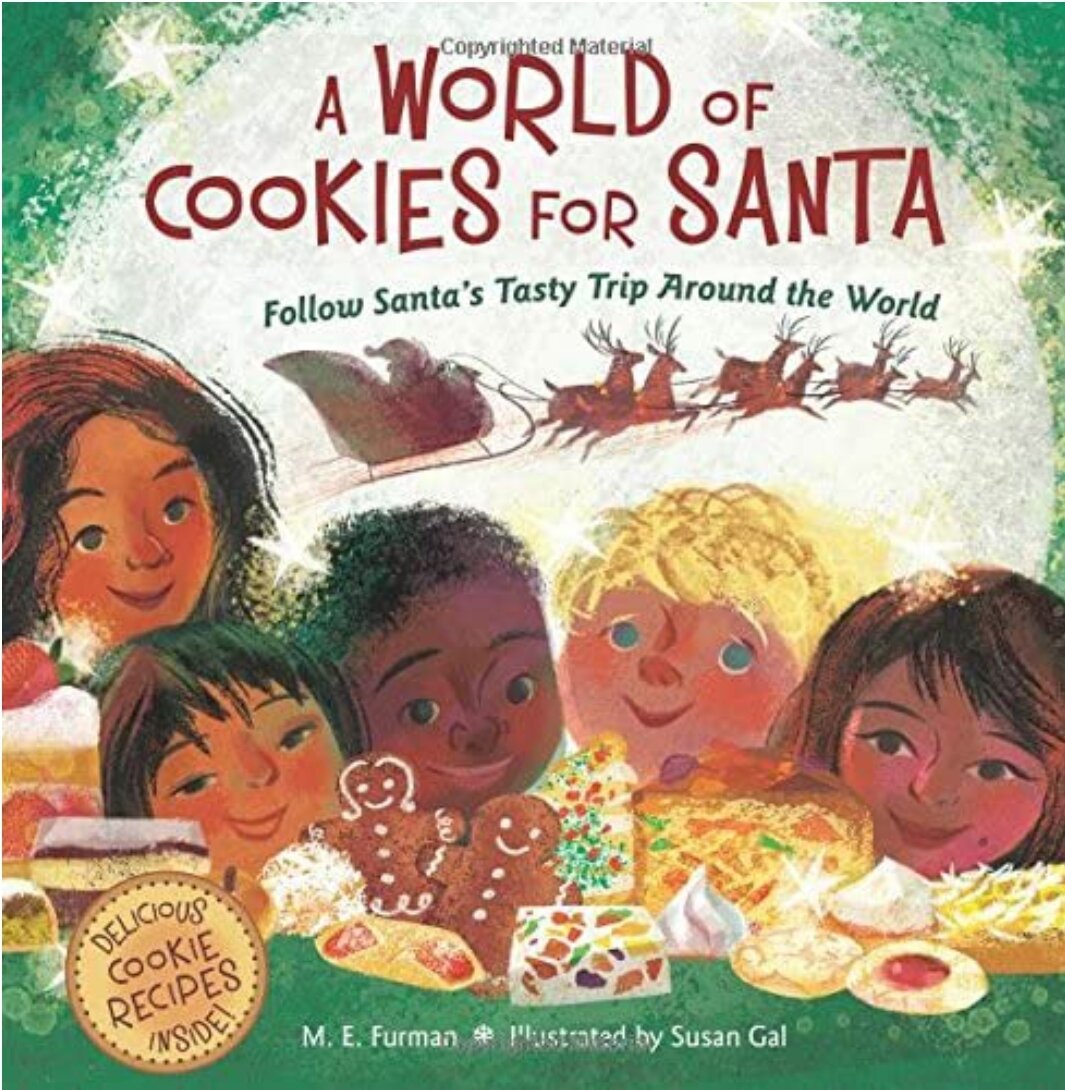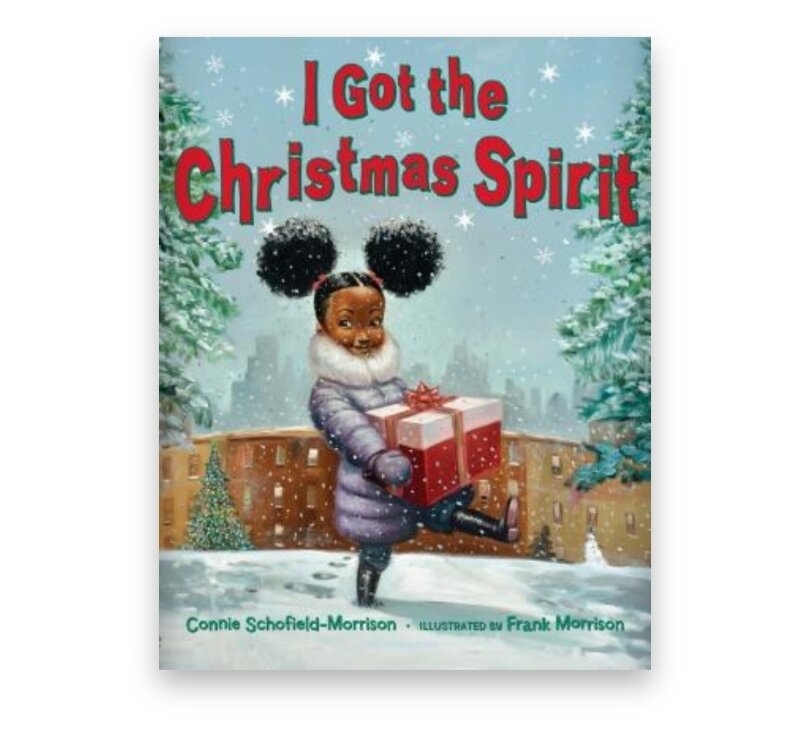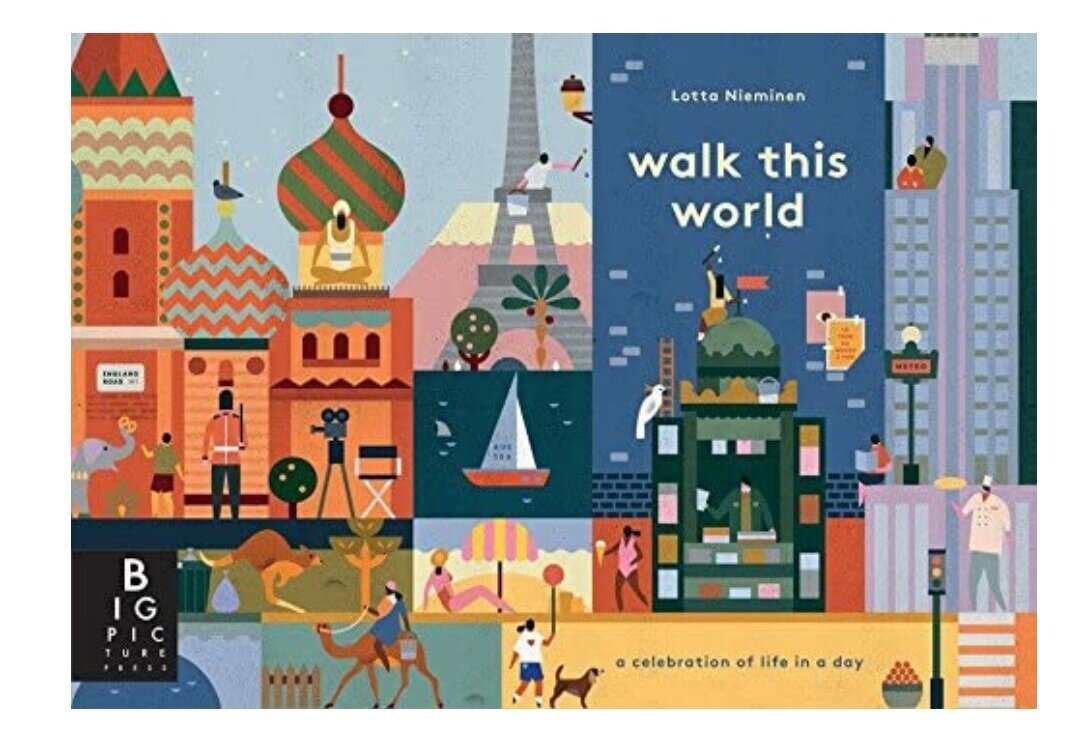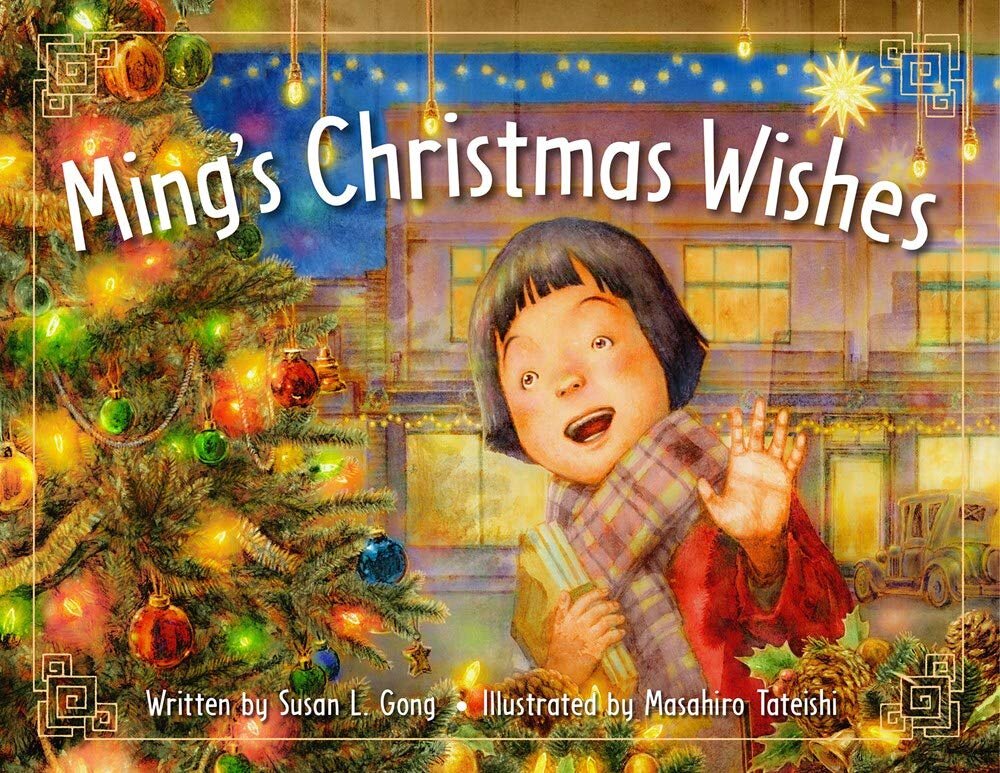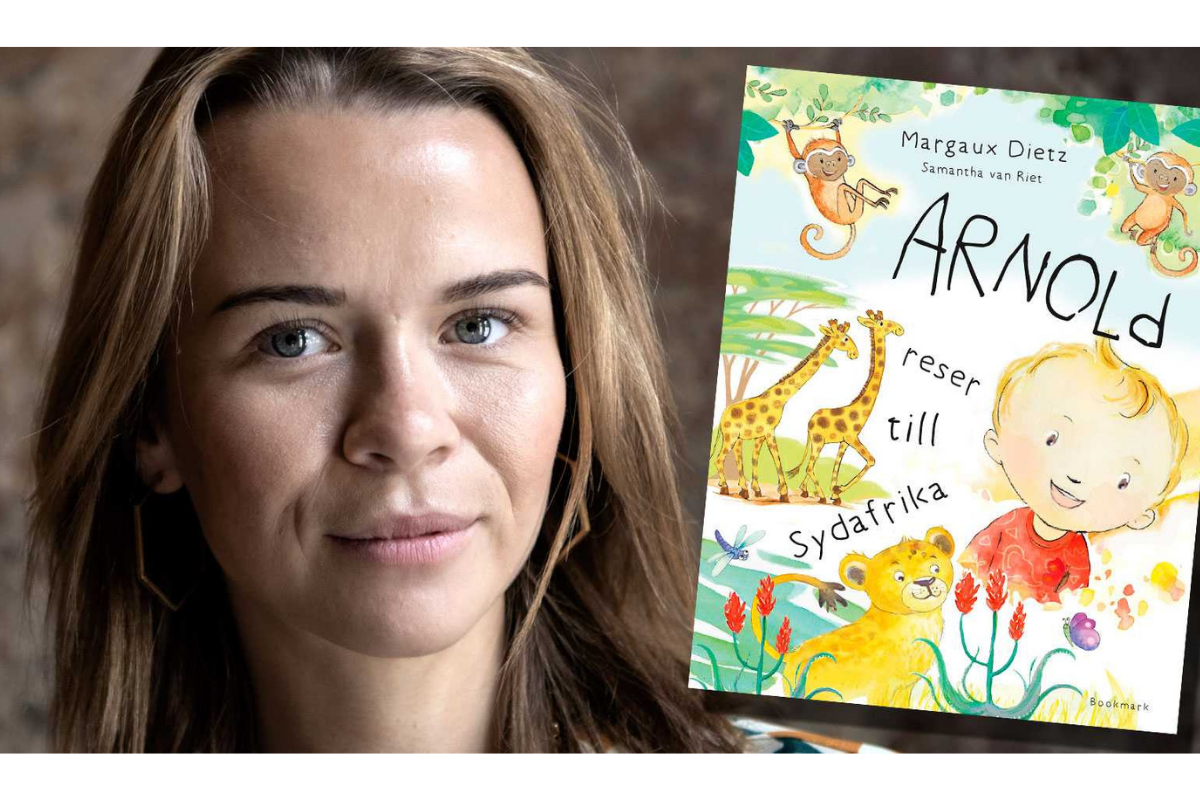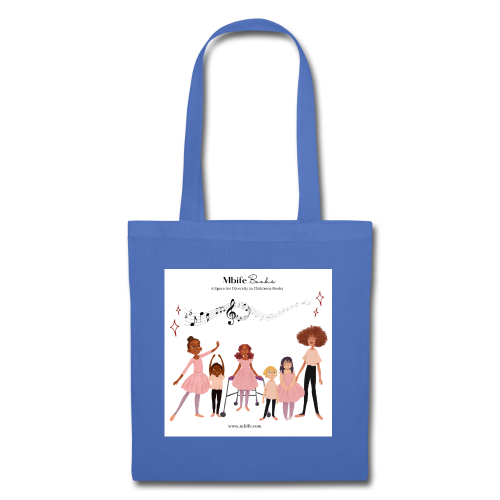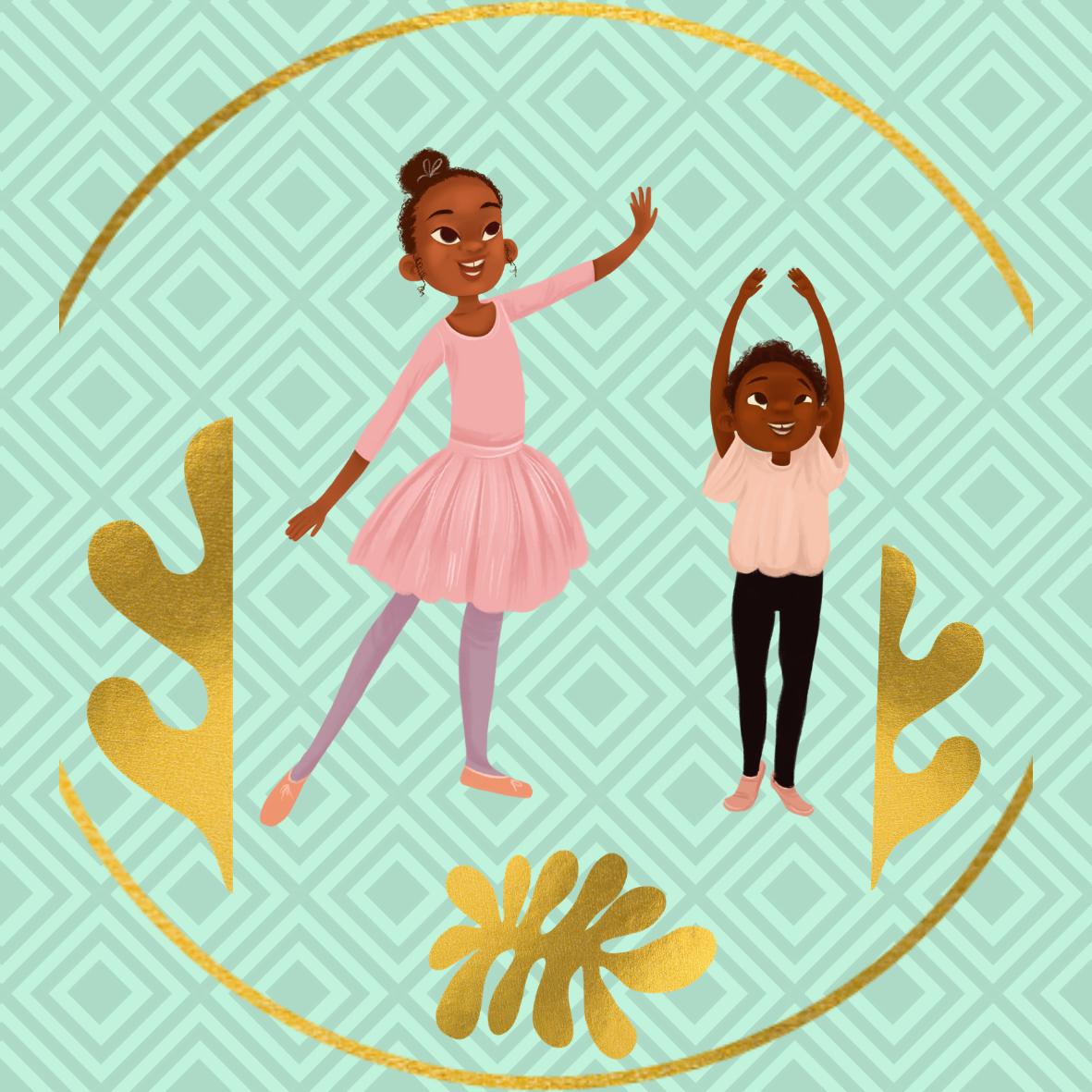
Welcome to the Blog
Thandi’s story continues..
Thandi has had an amazing year and this autumn you can join her in a new adventure!
In this sequel I was inspired from the millions of moments when I felt ‘not- present’, and just not enough as a parent.
I have a child who feels most at peace when they are moving, swinging and climbing.
It is through loving them that I discovered their ADHD traits and mine.
I wanted to tell the story through our incredible Lunthandi’s eye and I a gratedul for my team at Raben & Sjögren for making it come to life.
I am also really excited that we have signed with a UK publisher to release the english translation soon!
Two of a Kind
I come from a place where thick lips, a wide nose and soft hips are beautiful.
A gap in our front teeth is considered charming.
A soft belly and thick thighs - stunning.
I grew up in the embrace of women whose arms enveloped me in love.
They walked slow and their strides were purposeful and rhythmed to the quiet sounds of the beads around their waists.
For a brown girl like me, they were my reflection.
The definitions of beauty in this world are many.
Sadly, there is a dominant narrative which is singular.
Despite the multitudes of cultures around the world,
this one version of beauty, is thrust on us all.
I watched that version seep into my child’s mind.
She would touch the soft of her hair and doubt every curl.
Wonder if the curve on her waist was just a little too wide.
Second guess her lips and the brown of her skin.
It frightened me.
But I found a way.
All I needed to do was to remind her,
to show her that she is a reflection of me,
of my mother,
of our aunties,
of our lineage.
Tribes that go far back to before stories were written on paper.
I had to embrace my beauty, and power
For her to see that it also belonged to her.
Two of a Kind is most special to me,
It is a message of love and strength to the one girl I love most in this world.
My daughter.
Available now on kindle and paperback
Hej Sabina!
Under våren 2023 kommer Mbifebooks att ge ut vår nyaste författare Sabina Hassan.
Sabina berätta om din kommande titel; Molnhåret
Boken handlar om Claudia, hon föddes med hår av moln. När hon är ledsen blir molnhåret grått och skvätter regn
omkring sig. När hon är arg blir håret svart, det åskar och blixtar far åt alla håll. Claudia försöker bli av med sitt molnhår eftersom hon ofta blir missförstådd. Men ingenting fungerar och till slut försöker hon få kontroll över håret med hjälp av sin
familj.
Varför skrev du den här boken?
Bristen på mångfald och inkludering har under uppväxten format mig, och många andra med min hårtyp, hur vi ser oss själva. Om man såg annorlunda ut, till exempel hade annorlunda hår, var det vanligt med negativa kommentarer. Detta är något som följt en del av oss till vuxen ålder. Några av oss är idag samlade i en grupp på Facebook. Där delar vissa med sig av hur historien upprepar sig än idag bland deras egna barn, och hur detta påverkar dem. Jag skrev den här boken för att jag såg ett behov jag ville bidra med att fylla. Jag kände en stark vilja att göra något åt en problematik som påverkat mig och fortfarande påverkar många afrosvenskar i dagens samhälle. Och eftersom jag älskar att skriva, valde jag att ta den vägen
Är någon av karaktärerna baserade på riktiga människor?
Ja, händelserna som inspirerade mig att börja skriva "Molnhåret" är baserade på riktiga barn som gick igenom en liknande upplevelse som huvudpersonen i min bok
Vilket är ditt favoritögonblick eller karaktär i boken och varför?
Det var en svår fråga!
En av mina favorit scener är faktiskt första stycket. Utan att avslöja för mycket tycker jag att första stycket påminner mycket om relationen mellan mig och min egen pappa, som inte lever idag. Han var också ensamstående med mig precis som pappan i boken. Det som händer i första stycket är att pappan i boken agerar ganska fort i att försöka lösa en situation, på ett varmt sätt som får huvudrollen att varva ner. För mig betyder scenen tröst och trygghet från någon som känner och älskar en.
Vad önskar du att man tog med sig från din bok?
Att barn får agera ut sina känslor, de har också rätt att bli arga ibland. Det är viktigt att barn får utrymme att känna sina känslor, glädje som ilska och där emellan. Vi får svårt att möta ett ”problem” som ett barn har om vi vuxna inte försöker förstå problemet. Det handlar om hur vi vuxna ser med våra ögon, och hur vi förstår det vi faktiskt ser.
Molnhåret kommer att publiceras på engelska och svenska våren 2023.
Being Brave
In our home I have a curious child.
One who likes to take things apart and see how things work.
She needs to understand the Why and loves order around her.
I also have a cautious child. One who loves the familiar, and who is happiest when at home .
New experiences are just a no, no and everything must be introduced gently and over time he might join in , or simply decide it is not for him.
One thing that both children have in common, is a great big fear of washing their hair.
Something about the water on their face has been a challenge from their tiniest moments.
What I do admire about my children is their courage to try and try again.
I notice how positive reinforcement and championing them, gives them that little bit of strength to stay still even when they would rather run .
Lalo the Brave Lion tells the story of one of those tiny moments that build self esteem.
This book is also a celebration of afro hair and includes the step by step process for wash day!
Lalo The Brave Lion is out now in English and Swedish across bookstores.
Meet Sabina,
In the spring of 2023 Mbifebooks will be publishing our newest author Sabina Hassan.
Sabina tell us about your upcoming title:
Growing up in Sweden, the lack of diversity and inclusion shaped me, and many others with my hair type, on how we viewed ourselves. Negative comments were common if you looked different.
I wrote this book because I saw a need for it. I felt a strong urge to do something about a problem that affected me and still affects so many people of the afro diaspora, and because also because I love to write.
Are any of the characters based on real people?
Yes, the events that inspired me to start writing "Molnhåret" are based on real children who went through a similar experience as the main character in my book.
What’s your favorite moment or character in the book and why?
This is a tough question! My favorite moments are with the father. Without revealing too much, The opening of the book is very reminiscent of the relationship between my father and me, who is not alive today. He was also a single dad like the father in my book.
The father in the book has quick reactions and does his best to solve situations, with warmth which helps to calm his daughter. That scene represents comfort, love, and security from someone who knows and loves you very much.
I think my favorite character is the father.
What do you wish people would take away from your book?
Children are generally not allowed to act out their feelings in society, and they also have the right to get angry sometimes. I believe that children must be given the space to feel and handle their emotions, whether that emotion is anger, joy, or something in between. Adults find it challenging to face a "problem" that a child has because adults see the situation through their own eyes. It is important to offer children some space and comfort to understand their feelings and process their emotions at their own pace.
Molhåret is the story of a child with hair that brings her nothing but trouble.
It does what it wants, raining thunder and lightening, this hair disrupts her even in class.
Sabina Hassan’s new title offers a new take to hair love with this delightful picture book.
It will be published in English and Swedish in spring 2023.
It Was Always Here
We were born under the images of the casque bleu as we heard of our cousins fleeing Rwanda, and the horrors they left behind.
We listened as Liberia turned bloody and we waiting anxiously for the safe arrival of more family on the perilous journey back.
We remember sleeping in one giant bed with them, when they finally made it home, knowing that everything was left behind.
We heard about the clashes in Sierra Leone and we counted down to the arrival of large boats that brought family and best friends safely to us.
Guinea Bissau raged near by, despair and poverty spreading.
Pockets in Mali not far behind.
We marched as Afghanistan burst in flames, the same in Yemen.
We volunteered when Syrians came knocking, young people in search for kindness and humanity.
We prayed with Sudan and the Rohingans.
We fundraise, we advocate and we show up, again and again.
We know the signs, we know the rhetoric and the aftermath that always follows.
Mothers will weep.
Hope destroyed.
Cultures stigmatized.
And children, people with disabilities, people of african origin, always the most vulnerable.
We stand with Ukraine,
As we always stand with vulnerable populations.
But we are not blind to the treatment of our brothers and sisters, walking side by side in search of safety.
As the North is shocked and waking up to conflict.
We know it has always been there.
And we have always been here.
Speech for World Bullying Forum. Theme: Bullying and Migration- racism, integration and inclusion.
“…All children have the right to be safe in school, and the right to receive the appropriate support and help when needed. The education system must strive to counteract racism and discrimination while doing parallel work to build inclusion in the education community. Because our children matter.”
It is with great pleasure that I join some incredible speakers for this year’s World Anti Bullying Forum. This forum is of particular interest to me as it offers the opportunity for practitioners and researchers, carers and children to join in this important conversation around anti bullying.
Anti-bullying sits very closely with Inclusion, which is the focus of my work.
As a professional I work on inclusion within education systems and its links to violence in schools. For this introduction I will speak on this years seminar theme Bullying and migration – racism, integration and inclusion from a personal voice.
This year has been an important year in terms of recognising the nuances and redefinition of bullying and how it can be the pre-curser to racist acts within schools and communities. The links between homophobic bullying and racially motivated bullying for example are becoming more well known which allow us to identify, acknowledge and to act.
I am proud migrant. I am Gambian , Malian , French, Swedish. I have lived in 6 countries and I speak 5 languages . I am also a mother to two young children who were born and raised in Sweden. I must admit , I moved to Sweden out of pure curiosity. Happy in London I was drawn to this country which boasts of feminism, diversity and gender equality. From the outside looking in, I thought to myself this is where I want my children to be born.
A place where my son can dance in a skirt without eyesbrows raised.
A place where my husband can cook and bake without questions asked.
A place where my husband can enjoy as much paternity leave as I do, equally.
A place where my daughter can aspire to leadership roles without glass ceilings.
And so we moved.
We started a family
And I realised I was wrong.
As a new mother I was routinely ignored in medical offices or baby groups .
My children have been scorned, punched, and worse made to feel like lesser humans before even the age of 6.
Our experience is sadly not unique.
In Sweden Afroswedes are the Swedish minority most exposed to hate and these hate crimes are characterized by a high proportion of physical violence, which often take place in public areas, such as schools, and place of work.
I witnessed this first hand in my first few years in Sweden where I worked in a number of schools and preschools. The exclusion and bullying that I saw in was strongly underlined by homophobia and racism, and what was interesting to note , is that teachers were better equipped to recognise and address the former but not the latter.
I also found it hard to have conversations around race and discrimination. There was a general sense of racial blindness amplified by the fact that Sweden had removed the word race from legislation and common discourse a few years ago.
But bullying relating to race continues to persist.
In 2018, the FRIENDS report noted that 25% of children in year 1 to 3 reported feeling worried about being alone and excluded during break time. A closer look as to the reason why children were excluded or bullied at school we find “their country of origin” and their “ethnic background” at the top of the. The 2021, report showed that the figures remain much the same.
Children tell us that they are systematically excluded. They tell us that demeaning and racist language is common in schools with the N* word being used frequently by children and adults alike with little to no consequences.
And what sadens me the most, we find in the same reports that only 54% of children trust that the school system and their teachers would react and that there will be consequences to bullying .
Children and parents tell us that there is a lack of support, training and knowledge around racism and discrimination which means children who are victimised are often left without support.
Every year I get a pang of anxiety at the start of term.
Every year I anticipate the call or the message from another parent, another child who has been bullied , victimised or worse, because of the color of their skin.
Every year I dread the call from my childrens school, perhaps its our turn- yet again.
What is means is that as non-white parents are burdened to prepare our children to respond to and defend themselves from racism right from their very first day.
By the age of three my daughter no longer wanted to be brown, she wanted to be normal , so she could also look like a princess. Because all princesses are white right?
By the age of 6 she was surrounded, and punched by a group of children.
Her hair has been pulled at
Her nose questioned
Her identity examined.
Not once, did an adult step in to defend her.
The line between teasing and bullying , violence and aggression seems blurred at times.
Beyond physical acts, our children’s self esteem and self worth is at stake.
And that is where I chose to act. Besides all that I do in this sector, my children asked of me something that I never anticipated. They looked on the bookshelves and asked me where was their story.
That was moment I became a writer of children’s books. Because beyond safeguarding their bodies and their right to safe and quality education, I also wanted to inspire their minds. To show them that their lives matter, that they could be princesses, and astronauts, geologist and librarians. Despite what the media shows, we could be so much more and indeed we are so much more than a stereotype.
Bullying and violence in Swedish schools is well documented in academic and public institutions, however gender and at times class, are the most common lens applied to the analysis,
given the reluctance to acknowledge race within the Swedish discourse. Terms such as racially motivated bullying and racially motivated violence in schools are equally new and yet key to addressing it.
All children have the right to be safe in school, and the right to receive the appropriate support and help when needed. The education system must strive to counteract racism and discrimination while doing parallel work to build inclusion in the education community. Because our children matter.
Thank you.
4 Years...The Long road to my dream job in Stockholm
"...I had to apply to 210 jobs in Stockholm to get one interview.
.How can my profile be desirable for International jobs and yet I can't get an interview as a receptionist in Sweden?"
I was sitting in London working as a Coordinator for an NGO when I decided to move to Stockholm,
Being pragmatic , I sent my CV to a couple of NGOs and schools as I’ve always had this dual love for Education and Development.
Much to my surprise I got called for an interview in Stockholm within 2 weeks and was offered a job , working a nursery/primary school
just like that moving to stockholm became more concrete.
At that time, I had a BA from UCL, a Masters from IOE and over 5yrs work experience doing project management for NGOs ,including working for the UN.
I spoke English, French, Wolof fluently and had passable Spanish so I figured, id move and within a year I would be sure to find a job in my field again..
we moved
we settled
we learnt Swedish
we started a family..
everything was going smoothly , except on the professional front.
Being the pedantic person that I am, I made an excel sheet of all NGOs I could find in Stockholm and made sure to get on mailing lists and newsletter lists etc
I knew I had to stay 'connected'
I applied for a job almost weekly
I called the ones I wasn’t successful with to get feedback on how to improve my application..
I networked
I attended conferences, all alone to meet people in the field
I created my own group on FB to link professionals (like me) in Sweden within in the Development field
I contacted strangers on linkedin to volunteer and asked for advice for getting access to the Industry from a Swedish Perspective
and still nothing.
I listened to advice from Swedish friends about wording and formatting of my applications
I considered picture on cv , or picture off
I considered changing my last name 'Joof' ( staunchly West African) to my husbands 'Campbell' ( wonderfully international)
but in the end I kept my Joof,
I didnt add a picture either..
I stuck to my formality
During all this time I was still teaching,
I contacted the employment agency, arbetsförmedligen to see if they could help me find the way back to roles that I am passionate and qualified for,
They informed that they could not help as I was not unemployed (this is true) and encouraged me to quit my job and then contact them!
By early this year my energy was running dry.
I still hadn’t managed a single interview in 4 years
All the HR people I spoke to, told me my application was flawless and just to keep trying
By this time I spoke almost fluent Swedish and so submitted my CV in the language that was required.
And yet, still nothing,
In the end, it was through a friend that I had met through teaching in schools, that I found a voluntary role,
I was incredibly grateful and I took the role on , in addition to my full time job.
It drove me insane, working long hours in the school,
running home to be a mum for the few hours that I could and then going out for the volunteering job again
However, the voluntary role paid off and almost led to a paid position.
It wasn’t exactly my field but it was something I was good at, with an NGO that I genuinely cared for.
Right when i was about to sign for that role I got called for an interview.
my first official interview in Sweden
My energy was literally at its lowest,
But I went anyway,
I gave it my all thinking to myself at least it will be real-life practice for the future
It had taken 210 applications,
literally ,
I kept count
I went to the interview feeling like my chances were zero but it was the Dream Job,so I did my best
Right after the interview, They offered me the job
To be honest , I had worked so hard that I couldnt feel that immediate satisfaction or happiness right away
something in my head wanted me to be cautious as it felt too good to be true
I did finally explode with joy on that first day of work 2 months later, standing in front of the mirror in the bathrooms! :)
I still reflect on my journey though
It is still inexplicable how i managed just one interview in 4years of active searching
I had applied for management roles,
lower management roles
admin roles
secretarial roles
and somehow my profile wasn’t suited for any of these..
Sadly, i know too many people who are going through the same situation right now in Sweden,
I've often thought about why I never made it to interview
my background
my ethnicity
my non swedishness
My name
the sheer number of applicants
I guess i will never know,
but after all that , I was certain there was something about me , my profile, that they didn’t want, I know this for sure because during these years I have been invited 3 times for interviews with Large NGOs outside Sweden
How can my profile be desirable for International jobs and yet I cant get an interview as a receptionist in Sweden
If everyone else i knew was happily employed i would take it personally, but the opposite is infact true
I know too many proffesional international persons in Sweden who are experiencing the same
in a society strongly percived as embracing and open to diversity and other cultures the reality on the ground is rather surprising
During my search, I noticed the lack of Diversity over and over again..
at talks, conferences, or even just looking on office websites..
Stockholm society IS multicultural then why are we struggling to see diversity represented in the workplace
Im just going to leave that question there..
For those who are still job hunting;
volunteer, get a paid internship at Arbetsförmedligen, talk to people and dont give up and network, network, network.
I wrote this piece in October 2015 and it saddens me just how relevant it still is to so many people I meet in 2021.
What my Maman taught me.
I have had a number of conversations around how I started writing, what drives me and where I get my inspiration from. And in these moments and conversations I have come to realize there is one consistent thread that leads me back to a love of books. My mother.
I have had a number of conversations around how I started writing, what drives me and where I get my inspiration from. And in these moments and conversations I have come to realize there is one consistent thread that leads me back to a love of books. My mother.
We grew up moving from country to country and my mother carried our cultural heritage with us everywhere.
In the 80s, a time when there was no Netflix and VCRs were the thing, she made tapes of all our favourite cartoons from Asterix and Obelix to the Smurfs. She brought them with us when we left Belgium and moved to Nigeria. It was a tiny piece of our norm but also would support our french language skills once we moved to an anglophone world.
My mother isn’t a native English speaker and yet she sat with me day after day to help me learn English and do my homework.
We learnt twice as hard, mastering the British English and then moving again only to have to re-learn English and navigate the difference between a courgette and a zucchini.
I remember being a child and moving to a new home in The Gambia. My mum brought the carpenter in and ask them to build a bookcase from wall to wall.
She filled it with books of fiction, facts, fairy tales and everything you can imagine.
I also remember standing in front of that bookcase not too long after, annoyed that there was nothing new to read because I had gone through them all.
In the Gambia in the 90s there were incredibly few libraries around. We were lucky enough to have access to the one at the American School where the librarian Ms Sanyang encouraged me to read..read.. read..
As a family we would often drive from The Gambia through Senegal to Guinea Bissau. For almost 6 hours we would sit in the back and listen to the radio, stare at the countryside, or read.
By the time I was a teen I had read my fair share of Sweet Valley High and the Babysitters club. However, I had also read biographies of Saints, books about the Vietnam War. I had read about the Hmong and Aborigines and more.
Today I realise I have been reading my whole life, never really finding a genre, just reading broadly like an insatiable vessel and I never noticed it.
My mum gave me that gift.
I have also been reflecting on the fact that I am referred to as brave.
Brave to self – publish, when in fact I knew nothing about the publishing industry.
I do not consider myself brave, quite the opposite.
I am scared of rides at theme park, scared of the forest, scared of cockroaches and all sorts of creepy crawlies. I never watch scary movies and I am truly not fond of heights.
I am generally not the brave kind.
However, I am unafraid of new experiences and I trust in my ability to learn.
My mum taught me that.
She taught me to trust me.
That mistakes were part of the cycle, as long as you learnt from them
She taught me that the world is huge and it is mine to discover.
That, plus a strong sense of empathy that I got from my father are the fundamental building blocks that make me, me.
When I was at university in London I took a language option class in Spanish.
When it was time to get practical experience of the language, most students took a trip to Spain. I took a trip to Cuba.
I still don’t have a why for that decision, more of a “Why not?”
Most of my peers had a number of questions as to how I would manage in Cuba alone. But not my family, they supported me and just started looking at the practicalities of housing immediately.
Regardless of my choices in life or how far I have gone, I know and I trust that all it takes is a phone call and my mum would be right there.
Something about having faith in myself and having faith that my family are there for me, makes me move in this world different.
It makes me bold.
It focuses my sight on solutions and possibilities.
It helps me fail and get back up again.
This week as we celebrated the release of my third book Det Djupa Blå by one of the largest Swedish publishers, I was asked how it felt as a migrant, black woman who just learnt Swedish to be published in such an institution in Swedish!
I remembered my mother, teaching me English with her rolling French accent.
What can I say. I got it from my mama.
May 21: World Day for Cultural Diversity for Dialogue and Development
Home for me is not really a geographical space, I often describe it as a place where I feel a deep sense of belonging. Home is space where I know the codes, the norms, where I can move and exists as part of a whole. And I have this sense of belonging, in London, Los Angeles, Banjul, and Paris.
May 21: World Day for Cultural Diversity for Dialogue and Development, a day set aside by the United Nations as an opportunity to deepen our understanding of the values of cultural diversity and to learn to live together in harmony.
What is your cultural heritage?
I am ethnically Gambian, Malian, and French. I was born in Nigeria and recently naturalised as a Swede, after having lived here in Stockholm for 10years. I grew up in Nigeria, Belgium, France and the Gambia but also spent an important part of my life in London, so it is a space that is one of my homes.
Home for me is not really a geographical space, I often describe it as a place where I feel a deep sense of belonging. Home is space where I know the codes, the norms, where I can move and exists as part of a whole. And I have this sense of belonging, in London, Los Angeles, Banjul, and Paris.
How is your culture present in your daily life?
Culture being something present and yet almost subconscious, it is not something we notice we do or partake in even though we do it daily. I think the most evident one for me is language, at home we interchange fluidly between all the languages we are fluent it. In conversations with my children or partner, we can have one conversation using English, wolof and Swedish words. We break sentences and use the words that fits right or the language that feels right instead of sticking to one language all the time.
My 7 year old might say to me “ Maman, I cannot hitta mina skor”- starting in French, then English and ending in Swedish.. and I think it a perfect way to illustrate how multiculturalism exists in us, it is many separate things and yet still one.
We also express multiculturalsim in the music we listen to, the media we watch, the people we meet and the books we read.
For example given that I grew up with Asterix and Obelix and the Smurfs as THE French Cartoons, my kids were exposed to those first, together with Pippi Longstockings given that they were born in Sweden. In the same way we eat traditional Gambian, Malian, Swedish and French food all the time. My kids never get pancakes, always crepes, and they know no meatballs other than Swedish meatballs. Their favourite dish is Gambian Domoda a peanut butter stew, so even our diet is reflecting our cultural heritage.
What are some aspects around multiculturalism that are often not considered?
I think that people who are multicultural often have this superpower around adaptability. They know have to navigate and be flexible to change. Living in a global world many organisations need to actively think about the talent they recruit and how they can ensure inclusion in the workspace.
That includes thinking about gender, ability, ethnicity and multiculturalism. Working with and thinking about people who are multicultural requires moving away from the assumption that people are just one thing. That is an important skill to practice generally, and can help us address some damaging stereotypes.
People who are multicultural often have strong cultural competence, which means that in meeting new cultures they can find it easier to build relationships and make meaningful connections. This is an incredible asset in the personal and professional world.
And finally multicultural people are often, not always multilingual which is again a very strong positive in some many contexts.
Has being a multicultural person affected the work you do?
I would say it has, in that today I am work as a global education advisor . I work with countries across continents and thrive of meeting and building connections with new people. I am comfortable in this work because it confirms to me that we all share this one humanity, and it is recognisable if you look for it. I also find that I have no preference in which geographical area I work in, I am as happy to work in Romania, Peru or Indonesia, I prioritise based on the education needs.
Being a multicultural mom and raising multicultural kids has led me to look for books to share with them that reflect our existence and when I found the literature lacking, I launched myself to be a part of the solution.
For 3 years now I have authored children’s books which try to open up the world and have inclusion at the heart of it all.
It is not news that there is a global lack of diversity in children’s literature. The fact that we even have sections of books called ‘diverse books’ implies that there is a norm of books and the rest is outside that. Books which teach us about the Chinese moon festival, or Holi, are not diverse to me , they are part of the core of all children’s literature.
How does Multiculturalism and children’s literature connect.
One lesson that most parents would agree with me is that we want our children to know that they are more than just one thing.
You can be British-Ghanaian, you can be also be great at sports and ballet, you can be a great singer and a scientist, you can love noodles and tacos.
We want nuance and have the ability to exists in more than one space in our lives and I see children’s literature as a perfect way to start those important conversation’s.
By reading books that come from different voices, countries, genres, we open up the world, we expand our children’s realities and their dreams.
And if a child can dream it, they can be it.
Here are some of my favourite reads which broaden our world at bedtime:
Top three tips to support parents to encourage an awareness of diversity and inclusion with their children
Think about the colours -
Reflect on how colours are used in clothing, decors etc to reinforce gender stereotypes. Does your child feel more comfortable in yellow even though blue is the main colour available in one section.. help them choose yellow!
2. Think about the toys -
All toys are for all children, maintain a balance between creative play, learning games, actions figures and whatever else your child likes.
There is a correction between professional women in STEM related work and girls access to opportunities to play with and explore math and science related games.
3. Read a wide range of books-
Spend some time talking to librarians or looking up book blogs to find books that are fun and might offer the opportunity to learn or discover something new. Just like at Easter we might read about the Easter bunny or Christian stories, Ramadan is perfect time to read about Eid Celebrations.
4. Beware the Stereotypes
All media has the potential to reinforce negative stereotypes. We as parents can be more intentional to check what messages are being shared on specific shows, radio programs, or books . If your child loves ballet for example try to find books that show more inclusion in dance where boys, and differently abled people also get to participate.
Gender in our Home
The gender bias between the two kids became even more evident when both started dancing ballet. It is one of the few activities they both LOVE.
To have a brown daughter doing ballet – what a feat!
To have a brown son- silence… raised eyebrows…crooked smiles.
While the comments haven’t affected him, he has noticed that there are so few boys in dance, in the books we read. When he was three he asked me, pointing at the pages of a picture book, “but mama where is me.”
Being a storyteller I decided to address that.
When I turned 30 I had a daughter,
A beautiful remarkable daughter,
She was so much like me and yet nothing like me.
She was quiet, observant, and cautious
I am loud, extrovert, spontaneous.
She loved structure; and would arranged her foods in patterns.
She sorted her toys by colours.
She loved building and creating.
Every time my husband lifted an IKEA box to fix she would be right by his side with her screw driver and other tools.
When I met my husband I used my stiletto heels to hammer in nails, just to explain how much I wasn’t interested in such things.
But once I had this wonderful being in my lap,
I decided I would learn everything she was interested in learning.
I nurtured her love for the colour blue
I sat with Lego blocks for hours without being able to create anything while she meticulously built towers.
She received a bunch of dolls and make believe toys but that was never her thing.
She is 7 now and she has still never sat by herself engrossed in make believe play.
And that’s perfectly ok.
My daughter was cheered on by friends, teachers , everyone for breaking gender stereotypes, for doing things that ‘girls didn’t normally do’
My son was born and he was another surprise.
He loved to dance, to twirl, to smile.
He was gentle and soft spoken.
He stayed by my side, holding my hand most of the time.
He never jumped on the sofa or wrote on the walls,
He plays with the Barbies and Marvel action heroes, the Paw Patrols and creates scenarios of his own.
He loves to cook me fancy meals in his play kitchen and just yesterday helped me a fancy salad.
Unlike my daughter he is not celebrated for doing things ‘boys don’t normally do’ instead I see the concern in people’s eyes.
I field away ignorant commentary at the rainbows on his cloths or his favourite colour being yellow and red.
I allow him to be himself, without the outside worlds judgement.
The gender bias between the two kids became even more evident when both started dancing ballet. It is one of the few activities they both LOVE.
To have a brown daughter doing ballet – what a feat!
To have a brown son- silence… raised eyebrows…crooked smiles.
While the comments haven’t affected him, he has noticed that there are so few boys in dance, in the books we read. When he was three he asked me, pointing at the pages of a picture book, “but mama where is me.”
Being a storyteller I decided to address that.
I am well aware of the gender stereotypes that exist and the prejudice that reproduce them. But in my house each child of mine is a little human with their own interests, personality and temperament. That and only that is what determines how I parent them.
Given how different they are from each other, they rarely get the same treatment and we often repeat at home that “being fair doesn’t mean getting the same thing.“
One example is when I want to give them a special snack, my sons favourite would be cured salami or salted pretzel, while my daughter would love a juicy mango and candy. They often trade snacks at other people’s house because they know one likes the salty and the other the sweet.
One of the simplest ways to address some of these gender stereotypes is to see the child as an individual.
To offer them choices .
To introduce new toys and activities.
ALL toys are for ALL children
ALL colours are for ALL children- it’s up to them to choose, not just between just blue and pink.. there is so much more out there.
Open up possibilities, through introducing role models , there are incredible books that give children dreams to aspire for. Dreams that aren’t boxed into gender stereotypical roles.
ALL children can be great cooks, florists, architects, managers, nurses, creators etc etc etc..
If a child can dream it they can become it.
This May 2021 I am releasing a new picture book. illustrated by Sawyer Cloud, Ballet with Heart is the next adventure for Louis and Ella. Join them as they start ballet classes.
This unique book which promotes inclusion, tells the story of friendship and the love of dance for ALL children.
Support our crowdfunding by pre-ordering your book :
Get a Sneak-Peek below!
Ballet with Heart
The Big Blue / Det Djupa Blå
When she was small I wrote her a story about courage, persistence and time.
Taking the time to face what you fear until it becomes one with you.That little story birthed a new picture book titled;
The Big Blue / Det Djupa Blå
I grew up by the sea.
A short stroll and you could feel the salt air settle on your lips.
I can count on my fingers the number of times I went in the water to bathe.
I never learnt to swim.
I loved the water from afar and continued to love it when I moved, to live in various new countries.
Many years later, I got a daughter of my own and she was born with fear of water rooted in her.
I was determined not to pass on my hesitation, but it seemed she inherited it nonetheless.
“ a peek from afar was more than enough”
The first time she sat by the sea with me, I encouraged and coaxed. I did my best to get her to at least dip her little toes, but she looked at me and said mama it's too loud.
I had never reflected on the crashing waves in senegambia, on how mighty they might seem to one so small, and how terrifying they might sound to tiny ears.
So I held her close and we let the moment pass.
Through the years, every summer and most autumns we would visit lakes, streams, paddling pools.
She would watch, and she would think, and let me know it wasn't time.
We carried on like this until she was 5 and I signed her up for swimming classes.
Armed with her closest friends, she went in!
Victory!
She played and she learnt techniques carefully.
She moved around the water, making sure not a single drop touched her face.
Water on her face still meant total panic and chaos but she was in the water and that in itself was a beauty.
One summer
In the warm Gotland sun,
I watched her play in the pool.
Her bath ring and arm rings, snorkel and goggles, she splashed around having the time of her life.
Then she stood up, took it all off and she hopped in.
She swam under water for half the length and came up for air.
In that moment, I felt crushing fear and elation within the same breath.
She swam.
She still swims now, under the water somehow finding comfort beneath the big blue.
When she was small I wrote her a story about courage, persistence and time.
Taking the time to face what you fear until it becomes one with you.
That little story birthed a new picture book titled;
The Big Blue / Det Djupa Blå.
The award winning illustrator, Mathilda Ruta has created a magical world of water for my story and Raben & Sjogren will publish it in summer 2021.
Raben & Sjögren was founded in 1941 and two years later, the legendary Astrid Lindgren joined the publishing house. All Astrid’s books are published by Raben & Sjögren, and she worked there as an editor and director of the children’s books department.
Astrid Lindgren has always inspired me, as a pioneer of her time and a champion of children and child rights. Stories like Pippi Longstockings have enchanted children for generations and the house that brought her stories to life, will now publish my little book.
I am humbled.
Summer 2021 might seem like a long way, away so here is a sneak peek at what is to come..
We cannot wait to share a tiny part of our story with you.
Order your copy from our distributors:
Adlibris: https://www.adlibris.com/se/bok/det-djupa-bla-9789129728644
Bokus: https://www.bokus.com/bok/9789129728644/det-djupa-bla/
Akademibokhandel: https://www.akademibokhandeln.se/.../det.../9789129728644/
2021.
For Mbife, 2020 was a rollercoaster and the peek of this incredible ride was the birth to a new book. Our Favourite Things is an unconventional book, one of a kind. It lacks dramatic ark, perfect artistic design and character development. Instead it offers glimpses of lives of millions of children and families all over the world. It creates emotional connections. It offers positive male parenting, challenges gender roles, introduces new contexts, cultures and foods for the reader.
The book is different but different is where Mbife excels.
Together with the incredible illustrator Sawyer Cloud we created a window into our lives and redefined the concept of home.
My first book Mangoes & Monkeybread was selected as Teachers Pick by the giants at Amazon which was truly a celebration. The book is available in English, Swedish , French and Wolof. Wolof being the one I am MOST proud of.
Given the extensive amount of work involved in running my business I often look to my center, my motivation and reason for writing and that remains my children.
So this 2021, pandemic or not, we will crowd-fund for a new book, a ballet book .
At the center of the story is my son and his love for ballet, how it matches his sisters and how this must be normalized. All children should enjoy dance without prejudice or judgement.
I will be working with Sawyer again and we cant wait to introduce some old friends and some new one to you this spring.
The book will be crowd funded with the official launch happening in February 2021. There will be exciting rewards for each donation.
And if that wasnt exciting enough we have one more exciting piece of news which will be shared on the 25th January 2021. All I can give is this tiny hint from my post on 26th February2019..
Announcement to be made 25th January 2021!
Thank you for walking this journey with us.
Will Santa come if there is no snow?
"Will Santa come even if there is no snow?”
My kids asked me that question this week and it reminded me of a time when I was smaller and had the same question running through my mind.
Would Santa come where the sand is red?
Where the coconut trees line the streets?
Where mosques and churches stand side by side?
As a child I loved Christmas but my Christmas was never shown in books or on TV.
My Christmas involved family gatherings, boat latterns, carols, garlands, midnight mass, pepper soup and so much more.
I would look up at the sky and wonder how Santa would deliver presents since I had no chimney.
Santa is victim of a single story.
Christmas even though celebrated a million ways by even more people is often portrayed one single way.
Traditions, cultures, religious norms, all melt together and evolve over time and it is important that children are able to see that, to feel a part of that even if the story had one single point of origin.
Books can play an important part in creating this sense of belonging.
Santa, fairies, elves, mermaids all capture the imagination and hearts of children everywhere and can be portrayed in a multitudes of ways, if only we as adults dare to believe in their magic.
Here are some books that we are reading about Christmas and how it is celebrated.
BookGate! - Arnold Reser till SydAfrika
This week was quite the eventful one for us in Sweden as we experienced a rather interesting bookgate around a children’s book title Arnold Reser till SydAfrika by Margaux Dietz.
Imagine a an adorable picture book with bright colorful illustrations about a little black south African boy who takes a trip to Sweden. On his trip he meets deer, moose, wild boar and lots of wonderful wintery forest animals. In the book we see our little boy and his family who are also black south african sharing this adventure together. This is NOT the book Margaux wrote. The book I just described would offer a perspective that you rarely find on the book shelves, a book I would write but I can already imagine the comments!
The picture book Margaux did write, is one which can be seen as a pretty normal story about a little boy, Arnold (inspired by her son) who takes a trip to South Africa from Sweden. In South Africa he meets a symphony of lovely jungle animals. The illustrations are adorable and the little toddler himself is charming. The book is easy to read and I can see why it was nominated for the Adlibris Prize: Adlibris Priset Årets barnbok 0-6 år.
Arnold is depicted as white in the book, so is his mom and his family members. There isn’t a single other non white person in the book. Particularly as the book is inspired but the authors son and actual travels.
Up to this point nothing is unusual. There are literally thousands of books depicting Africa, that are full of jungles or animals or all white characters. I would even say that this is the norm.
What is unusual is that this book written by Margaux sparked outrage.
I have been watching the comments and reactions online these past few days and people are angry.
There are comments on her page, asking readers to boycott the book, writing personally to her and the publisher.
There is a movement, an energy around this outrage which I recognize as being sharper post-BLM.
Perhaps this is one of the after-effects, or we have simply gone past a corner and we will not be turning back anymore.
Generally we are saying
We will not have it anymore.
Given the stereotypes about Africa,
Given good story telling
Given the nuances and perspectives within story telling
Margaux’s book had the opportunity to introduce its tiny readers to South Africa going beyond lions, elephants and zebras..
Arnold could have met a neighbor friend to discover the animals with.
He could have met a tour guide, a fruit seller..
This is story telling, the imaginary and fact can meet and blend.. the options are endless.
As an African parent and story-teller I am TIRED of the Africa and Animals stereotype.
We have animals yes, and much much more. Most Africans who cant afford a safari (and most don’t) will never see the big 5, the lion, leopard, rhino, elephant, African buffalo and Zebra, Antelop etc etc.
But also, we are much more than this one facade that keeps being regurgitated at us again and again.
There is a reason that the We Need Diverse book Movement has taken off globally since 2015.
It is time to offer stories that are reflect the people within their context .
Stories that offer multiple dimensions of experiences.
In my first book, the two characters Ella and Louis visit the Gambia and taste some fruit that are local to the region. These fruit will often be completely unknown to the reader and isn’t that just a delight! That children will get to discover, through the pages of books and imagine beyond what they know. Isn’t that the magic that reading offers?
Ella and Louis would love to meet Arnold perhaps take another trip to South Africa, visit the cities, taste some fruit, splash in some muggy puddles, discover the landscape…what an adventure it could be!
Images that show the characters depicted in the book Arnold Reser till SydAfrika. The Grandpa, Grandma, Arnold, his mum and the ‘driver’.
Ballet with Heart
My son with his dark skin and his afro locs looked into my eyes as we were reading yet another book about ballet in bed and asked he asked me “mummy where is me?”.
“Mummy where is me?”
My son with his dark skin and his afro locs looked into my eyes as we were reading yet another book about ballet in bed and he asked me “mummy where is me?”.
It is not unusual for my children to identify with characters in the stories we read, neither is it unusual that there are very few that look like them.
However for the past 4 years I have been actively building a library of fun, adventurous, books where my children can see themselves reflected, have their minds challenged and have a good giggle.
My daughter who is now 7, developed an interested in ballet a few years back and so we got a bunch of books to read more and learn about this form of dance.
We also visited quite a few schools before signing her up for classes at The International Ballet School in Stockholm run by Ms Gina Tse.
The fact that Ms Gina is the former Principal dancer for The Royal Swedish Ballet and has danced in as Principal in countries across the globe is not the thing the made us decide on that school. The International Ballet School was a winner for us because it is incredibly child-focused and child centered. The teaching style is fun and pedagogical which means my kids feel like they are going to dance class to have fun and they just happen to learn some pretty awesome things at the same time. The fact that they are taught by international experts is pure delicious icing on the cake!
Parents all over Stockholm must agree with us because the classes are full, incredibly diverse and welcoming.
A few years later my son also developed an interest in Ballet and started classes there too. When he asked me to find him ballet picture books with a little brown boy, I took on the challenge and have been failing miserably. It had been hard to find picture books with little brown girls for my daughter but over the past years this has been changing.
Some of our favourite ballet reads
‘Boys Dance’ was just released in Autumn 2020 and is an Absolut hit!
In early spring, I started crafting a story for Louis in my head which I would tell him sometimes at bedtime.
In summer 2021 that story will come to life in a picture book taking inspiration from my children, their anxieties, their strengths, the school environment and Ms Gina herself.
At Mbife we believe in the arts, in inclusion, in powering dreams and we believe that Ballet with Heart will represent all our ideals and more.
The book will be illustrated by the amazing Sawyer Cloud with whom we wrote our latest release Our Favourite Things.
s.
The Promise
“Let’s talk about that very special promise. The Promise made to children all over the world whether they be playing in the sun or sitting in shade, they all share some very special Rights”
A Book to Build Inclusion
“Let’s talk about that very special promise.
The Promise made to children all over the world whether they be playing in the sun or sitting in shade, they all share some very special Rights”
I have built a career within International development for over 10 years with education and child rights at the heart of my work.
As a professional, a lot of my work centers on the United Nations Convention on the Rights of the Child (UNCRC), which serves as a pillar to guide our work and interactions with and for children.
Within a global movement struggling to address racism and discrimination, the UNCRC should to remind us that inclusion is in fact a Right, enshrined in law. A right that we must work actively to protect and ensure that the most marginalized benefit from equally and equitably.
The United Nations Convention on the Rights of the Child is brilliant. It is the most widely-ratified international human rights treaty in history.
The Convention has 54 articles that cover all aspects of a child’s life and set out the civil, political, economic, social and cultural rights that all children everywhere are entitled to. It also explains how adults and governments must work together to make sure all children can enjoy all their rights.
Governments, educators, lawyers, youth; people of all professions work with the UNCRC to enable the rights of children.
My upcoming book is the articulation of the UNCRC aimed at the youngest, children of preschool age.
Given that the Convention offers pillars for children everywhere, we need to make sure our children own these rights, know these rights and live these rights, right from the start.
Sign up below to get news about the book release:
Mbife, Whats in our Name?
I felt my own self esteem crumble, it felt as I was on the precipice, if I couldn’t do anything about my situation, I would just pack up my bags and leave, the world is large out there, I know I have homes out there, I know there peace out there..
The next morning, I woke up with the decision made. - I would start working on the books for my kids.
It felt like a concrete way to provide counter narratives for people and children like me.
If I couldn’t change my own existence , I had to make steps towards changing that of our children.
It all starts with Seinabo Sey

I have been a fan, since I discovered her a few years go.
We have her songs and videos on steady rotation at home, she gives you those powerful lyrics, gorgeous melodies and inspiring videos that speak to her insane talent and artistry.
I’ve written in a post about how the lack of diversity in our community impacted my then four year old daughter .
My worry, and anxiety around that situation, coupled with constant micro-aggressions led me to a sad and lonely place without me being fully conscious of just how much it affected me.
I had the privilege of attending Seinabo Sey’s video pre-release event for her album I am A Dream. At the event she spoke about exactly these feelings I was struggling with and how songs like ' Breathe ' were born from the need to find that safe space where one could just be.
The lyrics, the music, the sisterhood and beautiful images from the Gambia made my own struggles burst to the fore.
I went home that night in tears,
I felt my own self esteem crumble, it felt as I was on the precipice, if I couldn’t do anything about my situation, I would just pack up my bags and leave, the world is large out there, I know I have homes out there, I know there peace out there..
The next morning, I woke up with the decision made. - I would start working on the books for my kids.
It felt like a concrete way to provide counter narratives for people and children like me.
If I couldn’t change my own existence , I had to make steps towards changing that of our children.
The name Mbife, is from a language called Bambara, spoken the Mali, West African where my mum is from.
Mbife means "I love You".
The books are an act of love, and they are born from my love to my kids.
It made perfect sense.
I had actually started plans to write children’s books a few years ago with a brilliant entrepreneur and self-starter friend of mine called Harr who lived in the Gambia. We were very much in the planning stage when she died very suddenly, in her 30s.
I dropped the idea. It burned the tips of my fingers to hold on to something that I had wanted to share with someone who was no longer there.
I hadn’t thought about the books since then, till that night thanks to Seinabo Sey, that I found my way back to something that meant so much to me, something so powerful and tangible.
I want to remind you that it is not by accident that there is low representation of diversity in children’s books.
Many western societies still operate on racist /colonial attitudes that we have inherited and normalised today.
For so many decades we have accepted that here are no meaningful experiences of stories outside the west and our libraries reflect that.
We have inherited stereotypes around how minority groups are, and we continue to reproduce that today on the pages of our books.
Even though I am referring specifically to race here, the same applies to ethnicity, gender, sexual orientation, socio-economic status, age, physical abilities, religious beliefs, political beliefs.
This is why multicultural books are so important.
They provide tools to promote values around the concept of diversity such as mutual respect, acceptance, and equal rights.
Multicultural books help minorities with their own identity formation and an understanding and appreciation of characteristics, norms and behaviors which differ from their own.
Since researchers tell us that, ‘everything we read constructs us and makes us who we are”. then what we read to our children must be of the utmost importance.
💜
Our Favourite Things.
My children are a norm of their own,
like millions of kids globally,
they will see the world through their own lens.
They will speak several languages fluently.
They will belong in several spaces simultaneously.
and that is just fine.
In fact, its more than fine.. it is brilliant.
The Story of Home in The Gambia and Sweden
One evening, as I stood by the sink chopping cucumbers, my daughter came over to interview me..
Mum whats your favourite color she said..
Purple I replied and definitely yellow too.
Red and pink, shouted Louis, from behind my legs, eager to join in..
Mine is blue.. blue and rainbow colors are the best, Ella chimmed in.
My turn? I asked, what is your favorite food?
Domoda and sushi!! Ella replied bouncing in excitement at the thought.
Chips, Soupa and köttbullar! Louis yelled out with biggest grin ever.
I laughed out loud at this intercontinental menu my kids had conjured up in a flash.
Okay, last one.. whats your favourite place? I asked quietly.
“ Where the sky fans are.. grandpa Aniels’ house with all the fruits and the park with aunty Yollie..”
Right , I smiled..how about you Louis..whats your favouirtie place.?"
“With you mama, I wanna be with you.”
In that moment Our Favourite Things was born.
I saw my kids reflecting such a big part of me.
I have many homes.
I find it easy to create new homes.
After so much travel throughout the years, I have parts of my heart in London, Paris, Lucknow, Stockholm, Khartoum, Banjul, Los Angeles and D.C.
All these places hold my memories of growth, of joy, pieces of belonging and the people I love.
Through my children’s answers to this silly game, I saw them bring their worlds together in one breath.
They too, are citizens of the world who love french fries, Gambian Domoda and quintessential Swedish meatballs.
My daughters favourite places were Gotland; the stunning island in Sweden with powerful wind turbines, Grandpa Aniels’ house in The Gambia with its millions of fruit trees, lizards and experiments she could discover with him and aunty Yollies’ park in North London.
My children are a norm of their own,
like millions of kids globally,
they will see the world through their own lens.
They will speak several languages fluently.
They will belong in several spaces simultaneously.
and that is just fine.
In fact, its more than fine.. it is brilliant.
Like Louis articulated so beautifully with all the grace and intelligence a 3 year old can have, a country or place does not determine what we call home.
The people we spend our time with, the feeling of peace and love, the feeling of being enough..that is what we define as Home.
Our Favourite Things gives you glimpse of the two worlds we call home, The Gambia and Sweden.
Each memory in the book is shared from an adult, a 6 year-old and a 3 year-old perspective, because each is important and unique in themself.
Discover with us.
Order your copy here now:
Languages available: E
nglish &
Swedish
Format: Hardback, Paperback, Ebook
Beställ din bok på Svenska här
Watch the book trailer below:
The book was created with Sawyer Cloud, an amazing artist based in Madagascar.
Her illustrations brought our story to life and we look forward to future collaborations together.
Intervju med Kultwatch: MeR barnkulturs nätverk för afrosvenska barnboksförfattare
“Barn måste få upptäcka saker. Svensk pedagogik har en styrka i att den bygger så mycket på att utforska, men det märks verkligen inte i bokutgivningen, särskilt när det gäller Afrika. Det verkar inte vara nåt problem att ha en komplex fantasyvärld med enhörningar och allt möjligt, men böcker om Afrika handlar för ofta om en fattig familj på landsbygden eller talande djur.
För mig är det jätteviktigt att fatta att barn bara kan sträva mot sånt som de faktiskt vet om existerar. Det är viktigt att visa berättelser där de faktiskt kan se sig själva, så att de kan bli starka och framgångsrika vuxna.”
Emily Joof and Woody Oliphant shares some thoughts on diversity in childrens books and thier work with MeR Barnkultur.
Emily : “Barn måste få upptäcka saker. Svensk pedagogik har en styrka i att den bygger så mycket på att utforska, men det märks verkligen inte i bokutgivningen, särskilt när det gäller Afrika. Det verkar inte vara nåt problem att ha en komplex fantasyvärld med enhörningar och allt möjligt, men böcker om Afrika handlar för ofta om en fattig familj på landsbygden eller talande djur.
För mig är det jätteviktigt att fatta att barn bara kan sträva mot sånt som de faktiskt vet om existerar. Det är viktigt att visa berättelser där de faktiskt kan se sig själva, så att de kan bli starka och framgångsrika vuxna.”
